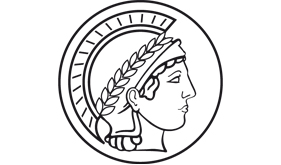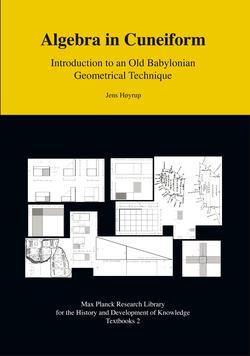This textbook analyzes a number of texts in “conformal translation,” that is, a translation in which the same Babylonian term is always translated in the same way and, more importantly, in which different terms are always translated differently. Appendixes are provided for readers who are familiar with basic Assyriology but otherwise philological details are avoided. All of these texts are from the second half of the Old Babylonian period, that is, 1800–1600 BCE. It is indeed during this period that the “algebraic” discipline, and Babylonian mathematics in general, culminates. Even though a few texts from the late period show some similarities with what comes from the Old Babylonian period, they are but remnants. Beyond analyzing texts, the book gives a general characterization of the kind of mathematics involved, and locates it within the context of the Old Babylonian scribe school and its particular culture. Finally, it describes the origin of the discipline and its impact in later mathematics, not least Euclid’s geometry and genuine algebra as created in medieval Islam and taken over in European medieval and Renaissance mathematics.
1 Introduction: The Issue – and Some Necessary Tools
2 Techniques for the First Degree
3 The Fundamental Techniques for the Second Degree
4 Complex Second-degree Problems
5 Application of Quasi-algebraic Techniques to Geometry
9 A Moral
Appendix A: Problems for the Reader
Show All
A
Abacus
Akkadian
principal language
“Akkadian method”
Al-Khwārizmī
Algebra
and equations
and quasi-algebra
meaning of word
Algebra, Arabic
and geometrical riddles
origin
Algebra, Babylonian
and Greek theoretical arithmetic
arithmetical interpretation
based on tangible and measurable magnitudes
blind alley
cultural function
didactical function
discovery
erroneous arguments
flexible instrument
origin
pretendedly practical problems
principles of interpretation
problems with no practical applications
product of the Old Babylonian epoch
quasi-disappearance
resurgence in reduced form
school topic
shortcomings of arithmetical interpretation
variation of coefficients
Analysis, Greek
Analytic method
Angle, Babylonian notion of
practically right
AO 8862
#2
B
C
P
Pacioli, Luca
pi
Place value number system
“Posit”
Practitioners, mathematical
and mathematical riddles
taught in apprenticeship
Pride, professional, of scribes
Problems
about rectangles
about squares
constructed backwards
Progress
“Projection”
Proof, numerical
Proofs of problem solutions
Pure mathematics, Babylonian
R
“Raise”
Recreational problems
Rectangles
primacy compared to triangles
Reed, broken, problem of
Reed, metrological unit
Reference volume
Regular numbers
Remainder, notions of
“Repeat” (“until n”)
Representation
fundamental
fundamental, Babylonian
geometric
of areas by line segments
Riddle format
Riddles, geometric
adopted and transformed by the school
Riddles, geometric, tradition of
and modern mathematics
Riddles, mathematical
their functions
S
sar
“Scatter”
School dimension of figures
Scribe school
Scribes
profession of
their duties
Second degree
complex problems
fundamental techniques
Second degree equations, practical application of
“Separate”
Sexagimal system
Shekel
sìla
“Sixty”
Square and square roots
Square roots, approximated
Squares
concentric
Standard units
“Steps of”
Str. 368
Structure diagrams
Substractive magnitudes
Sum, notions of
Sumerian
dead language
learned language of scribes
support for professional pride
“Surface”
Surveyors
Akkadian
riddle tradition of
Synonyms in mathematical terminology
T
Tables
equal, 1 joined
learned by heart
metrological
of cubic “equals”
of igi
of multiplication
of squares and ”equals“
Tablets
damaged
for rough work
support for writing
Talent (weight unit)
“Tear out”
Terminology, Babylonian mathematical
Third degree, problems of
Thureau-Dangin, François
TMS IX
#1
#2
#3
TMS VII
#1
#2
TMS VIII
#1
TMS XIII
TMS XVI
#1
#2
Translation
conformal
of numbers
principles
True value of a magnitude
Information
ISBN
978-3-945561-15-7
DOI
10.34663/9783945561157-00
Publication Date
Dec. 8, 2017
Print on Demand
currently unavailable
Suggested Citation
Høyrup, Jens (2017). Algebra in Cuneiform: Introduction to an Old Babylonian Geometrical Technique. Berlin: Max-Planck-Gesellschaft zur Förderung der Wissenschaften.
Submitted by
Robert K. Englund

